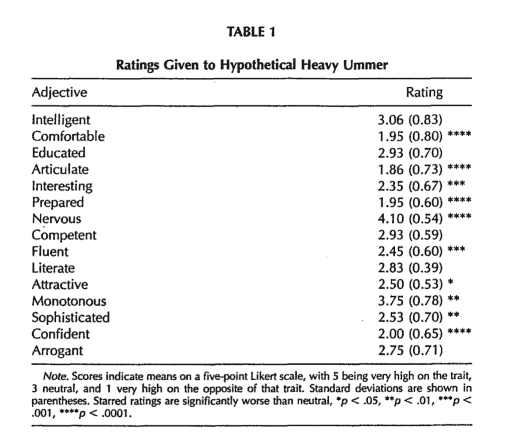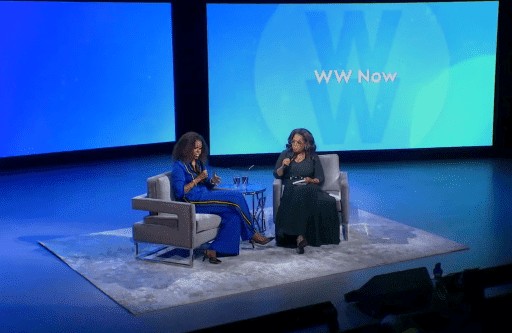This article is originally published on descript.com.
What are filler words? “Ums,” “ahs,” “you knows,” “likes,” and “kind ofs,” to name a few. They’re completely natural, and for most people, unconscious and unavoidable. We use them when we’re thinking about what to say, trying to find the right word, or simply to add flavor to casual conversations.
But context is everything, and for many listeners, too many filler words means an uncertain, unprepared, ineffective speaker. If you’re a podcaster, YouTuber, or presenter, learning how to stop using filler words — or simply editing them out of your content — is the way to go.
Read on to discover:
- Why we use filler words, and what they can signal to your audience
- How filler words can impact listeners’ perception of a speaker
- How many filler words is too many
- Some simple techniques for relying less on filler words in your own speech
Why do we turn to filler words?
Virtually everyone in every culture around the world uses filler words in their speech. According to research by Duvall et al. (2014),“scholars have narrowed down the causes of filler words into three categories: divided attention, infrequent words, and nervousness.”
Filler words are completely natural — but use too many and your audience will notice.
Divided attention is familiar to anyone who has tried speaking while multitasking. The more we attempt to focus on more than one thing while speaking, the more frequently we turn to filler words.
Infrequent words are words that we don’t use often or don’t know well. While we’re racking our brains for the word we’re trying to find, we use filler words to fill the space.
Nervousness, of course, is the most challenging of all. Once we become preoccupied with how listeners are perceiving what we say instead of what we’re trying to communicate, a compounding feedback loop of nervousness sets in. When we’re nervous, we speak more quickly than usual and say things we don’t mean or didn’t intend — filler words might be the least of a nervous speaker’s problems.
Filler words change what listeners think of a speaker — for the worse
Since filler words are most commonly caused by a lack of focus, unfamiliar or unknown words, or sheer nervousness, it’s not surprising they impact how we perceive a speaker — for the worse.
Writing in the Journal of Nonverbal Communication, Nicholas Christenfeld (1995) surveyed a group of students and asked what they think of people who use excessive filler words. According to that survey, speakers who use too many filler words are “uncomfortable, inarticulate, uninteresting, ill-prepared, nervous, disfluent, … unsophisticated, and lacking confidence.”

Students’ expectations of a “heavy ummer.” Higher numbers mean a greater expectation of that trait.
A more recent study by Pykto and Reese (2013) also examined listeners’ perceptions of filler words in speech. Notably, they found that the presence of filler words didn’t affect listeners’ perception of a speaker’s intelligence — because the meaning of a speaker’s message matters more to listeners than how it was delivered.
But they did find that filler words negatively impact listeners’ perceptions of preparedness and efficacy at public speaking. “Unpreparedness may suggest a lack of forethought that seems necessary to intelligently convey a message,” they write. If you’re a content creator or public speaker, you definitely want to avoid that. Zap those filler words!

Too many filler words means listeners may think you’re unprepared or an ineffective speaker.
The takeaway? Keeping your audience engaged and focused with a meaningful message matters more than the filler words you use, but reducing your filler word usage will improve your audience’s impression of you as a speaker.
How many filler words is too many?
Duvall et al.’s research examines the case of Caroline Kennedy, daughter of John F. Kennedy, who ran for a New York Senate seat in 2008. After being interviewed by a local television station and uttering nearly 60 filler words in two and a half minutes of speech (a 13% filler word rate), she experienced a thrashing in the media. Her campaign never recovered after that, and she dropped out of the race after only two months.
13% — definitely too many filler words.
For comparison’s sake, we analyzed other examples from some well-known celebrities, speakers, and personalities by transcribing their speech in Descript, detecting the number of filler words, and then measuring them against the total number of words.
|
Media |
# filler words |
# total words |
% filler words |
|
Steve Jobs announces the iPhone |
29 |
1881 |
1.5% |
|
Chadwick Boseman’s Howard University commencement speech |
46 |
3671 |
1.3% |
|
311 |
8847 |
3.5% | |
|
Physicist Brian Cox talks wormholes and time machines with Joe Rogan |
48 |
1551 |
3.1% |
|
Jenna Marbles cuts and colors her own hair |
56 |
2899 |
1.9% |

The highest filler word percentage was 3.5% — much lower than Caroline Kennedy’s demonstrably negative 13%. If you can, keep your own filler word rate at 5% or less.
Managing filler words in your own speech
For most speakers, doing away with filler words altogether is very difficult — or even impossible. It is possible to manage your reliance on them, however, and these strategies will help you keep your own filler word usage in check.
Be aware: Being aware of which filler words we rely on is key to using them less. Record yourself speaking, ideally in a casual, relaxed setting, and listen back. Which filler words do you gravitate towards? (Remember that “like,” “so,” “you know,” “I mean,” “right,” and many more can be used as filler words.) Then try to identify them in your day-to-day speech by asking a friend to point them out or making a quick tally in a notebook every time you notice them cropping up.
Good preparation will help you reduce filler words, but editing them out is often your best solution.
- Be prepared: Being prepared, at ease, and comfortable is one of the best ways to reduce your reliance on filler words. Interviewing a guest? Spend time preparing questions you want to ask ahead of time and sketch out the wording of those questions to keep yourself on track. Recording a video? Prepare an outline that contains key messages, supporting information and notes for transitioning from one topic to another. Memorization isn’t the goal — that will make you sound phony, in fact — but writing down or rehearsing important questions and messages will prevent you from drifting off course and relying on filler words.
- Pace yourself: Maintaining a steady pace is one of the best strategies to improve your speech. Many people speak quickly when presenting or recording content, and it’s very easy to speak so fast that you outpace your own thoughts. When that happens, we use filler words to give ourselves time to catch up. Make a conscious effort to slow down and maintain a steady, even relaxed pace when you’re speaking, and you’ll immediately notice a difference in how your speech sounds — it’ll help with nervousness, too.
Editing filler words out doesn’t have to be painful
No matter how good you get at filler word management, you’ll still encounter occasions where you need to edit filler words out of your own podcast or video.
Editing out filler words with a traditional timeline-based media editor is painstaking work. When you discover filler words that need to be trimmed, zoom into the waveform to create a precise edit boundary, then delete. Listen back to your edit afterward: If deleting a filler word results in a clipped or awkward sentence, it’s better to leave it in.
If you’re looking for a better solution for filler word removal, try Descript. AI-powered filler word detection means you can detect and remove “ums,” “uhs,” “likes,” “you knows,” and many more with a couple of mouse clicks. If you’re used to dealing with filler words in a timeline-based editor, this tool alone might save you hours of time and energy.
Once you start paying closer attention to filler words, you’ll notice just how often they appear in everyday speech. Use these tips to manage your own filler words, or edit them out together. Your listeners will thank you!

Melissa Guller is the founder of Wit & Wire, where we help everyday experts become profitable course creators. She previously worked full-time for Ramit Sethi, Teachable, and General Assembly. Today, she shares simplified tech tutorials and modern marketing strategies through our blog, YouTube, and Wit & Wire Weekly newsletter
